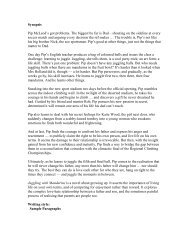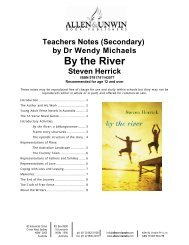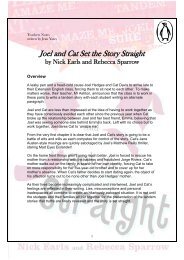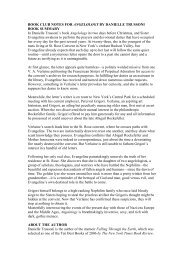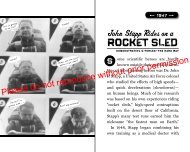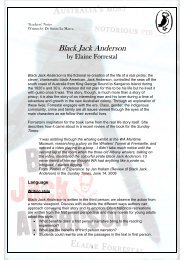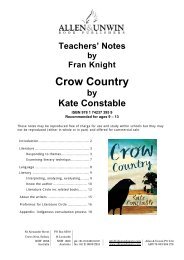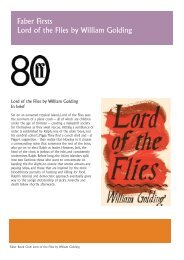Download Teaching Notes pdf - Good Reading Magazine
Download Teaching Notes pdf - Good Reading Magazine
Download Teaching Notes pdf - Good Reading Magazine
You also want an ePaper? Increase the reach of your titles
YUMPU automatically turns print PDFs into web optimized ePapers that Google loves.
MESSAGES, MORALS AND THEMES<br />
Responsibility for the<br />
natural environment and<br />
the future<br />
• Create a large class mural<br />
that provides examples of<br />
why everyone in the Dogstar<br />
series needed to leave Old<br />
Earth.<br />
• Add statements to the mural<br />
to explain how this is similar<br />
to or different from our planet<br />
Earth.<br />
• Brainstorm all of the things<br />
that people consume each<br />
day. Create categories for<br />
the items, for example,<br />
food, drink, services,<br />
toys and entertainment,<br />
communication and media.<br />
Develop a survey and<br />
conduct an audit at school<br />
and/or at home to record<br />
all of the products and<br />
services consumed, used or<br />
purchased by each student<br />
in one day. Depending on the<br />
age of the students this may<br />
include food, clothing, toys,<br />
multimedia, drinks, energy,<br />
water and so on.<br />
• Make a class list of the<br />
reasons people buy things,<br />
for example, peer pressure,<br />
they are needed, persuaded<br />
by advertising, it’s ‘cool’, for<br />
entertainment.<br />
• List the advantages and<br />
disadvantages of buying lots<br />
of ‘things’ that are not really<br />
needed. In what ways does<br />
consumerism impact upon<br />
the natural environment?<br />
• Discuss what makes a<br />
product ‘cool’ or attractive,<br />
for example, friends have it,<br />
popular people have it, it has<br />
a great logo, it looks good, it<br />
works really well, celebrities<br />
have one or advertise it.<br />
Make posters promoting<br />
the idea that ‘It’s cool to be<br />
different’.<br />
Secondary students may<br />
be interested in reading<br />
about the way in which<br />
companies work to be ‘cool’<br />
so that people will want their<br />
products. Teachers will need<br />
to check the website to be<br />
sure it is suitable for their<br />
students.<br />
http://www.pbs.org/wgbh/<br />
pages/frontline/shows/cool/<br />
etc/hunting.html<br />
• In episode twenty-six of<br />
Dogstar, when everyone<br />
returns to Old Earth,<br />
Ramon Ridley is asked to<br />
develop rules to ensure the<br />
sustainability of the planet.<br />
If this animation was based<br />
on reality, do you think this<br />
would be necessary? Why or<br />
why not?<br />
Work in groups to list the<br />
ten most important rules you<br />
would include.<br />
• As a class, discuss the<br />
responsibility we each have<br />
for the natural environment.<br />
Create a positive focus by<br />
encouraging students to<br />
suggest ways each of us can<br />
contribute to environmental<br />
sustainability through small or<br />
larger actions.<br />
Create a graffiti wall filled with<br />
images and lists of strategies<br />
that people of all ages can<br />
implement to reduce the<br />
impact of humans and in<br />
particular of consumerism on<br />
the natural environment.<br />
• Have students work in<br />
groups to plan, storyboard<br />
and create their own<br />
animation that tells a story<br />
of hope for our world.<br />
Depending on their ages,<br />
interests and capabilities,<br />
students may use software<br />
as simple as PowerPoint;<br />
they may even use Flash.<br />
Alternatively, models or<br />
clay or cutouts could be<br />
animated.<br />
SCREEN EDUCATION 11



